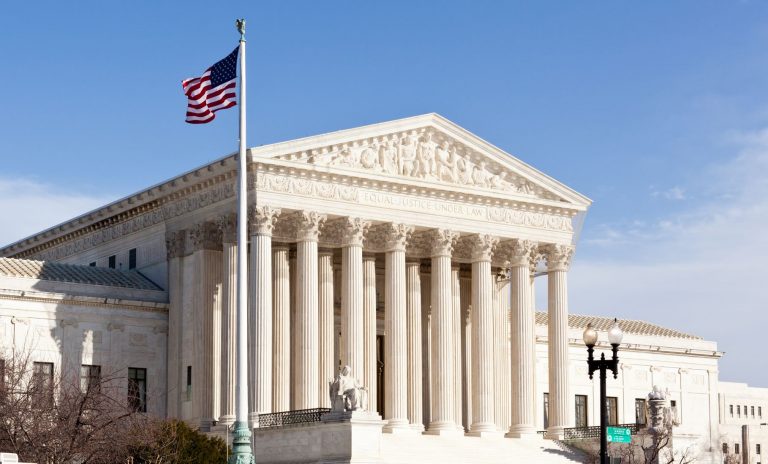3 Ways Insurance Companies Can Navigate the Surge of COVID-19 Business Interruption Claims
3 Ways Insurance Companies Can Navigate the Surge of COVID-19 Business Interruption Claims
The global health emergency caused by COVID-19 has either disrupted or completely interrupted business operations across the United States. The financial impact of government-mandated shutdowns on businesses is substantial and multiplying each day for many enterprises. Consequently, insurers are now navigating an anticipated enormous wave of claims for losses due to the business interruption of shelter-in-place orders.
Business interruption coverage can be added to a commercial property insurance policy in order to protect businesses from lost revenue sustained as a result of specific disruptions to their operations which are identified in the insurance policy. Typically, this coverage is triggered only when the policyholder sustains direct physical loss of or damage to an insured property. The most common examples include physical damages sustained from natural forces such as fire, wind, and lightning.
Coverage determinations of COVID-19 claims will depend on the specific policy language at issue. As such, proactive policy review and tracking legislative and legal developments are key for insurers navigating the multitude of business interruption claims they are receiving.
Review Policies, Forms, and Endorsements
Insurance companies are reviewing their policies, forms and endorsements to assess claims for business interruption coverage. While there are many variations in policy language, the following key language must be considered:
- Direct Physical Loss or Damage. In most all-risk commercial property policies, business interruption coverage is only triggered if an insured sustains direct physical loss of or damage to its property by a covered cause of loss. Coronavirus-related business losses may not fall within that grant of coverage, although this coverage issue will undoubtedly be decided differently across jurisdictions. For example, a New Jersey court previously ruled that an ammonia leak which shut down a manufacturing plant was “physical loss or damage,” because it rendered the business uninhabitable or otherwise unfit for the business’ intended use. Other courts have found that there is no physical loss or damage if the claimed loss does not alter or otherwise affect the structural integrity of the property. See, e.g., Mastellone v. Lightning Rod Mut. Ins. Co., 175 Ohio App.3d 23 (Ohio App. 2008).
- Civil Authority Coverage. A commercial property policy may also cover losses sustained when a “civil authority” mandates a business to shut down operations because of physical loss or damage to a neighboring property. However, like business interruption coverage, the key issue for COVID-19 claims remains whether the neighboring property sustained direct physical loss of or damage to that property.
- Exclusions and Inclusions. The key exclusion to be on the lookout for is the so-called “virus exclusion,” which was added as an ISO form in 2006 following the SARS outbreak of 2003. Not all policies contain a virus exclusion, but those that do are not likely to afford coverage for coronavirus claims. Other exclusions, such as those related to bacteria, communicable disease and pollution should also be considered, but may not be as likely to apply.
Specialized policies in certain industries. The discussion above applies mainly to commercial property policies that have added business interruption as an additional coverage. Of course, there are other types of insurance policies that may be impacted by COVID-19 claims, such as Event Cancellation and Trade Disruption policies, and so insurers should carefully review the policies and their unique terms to assess the potential for coverage.
Monitor Federal and State Legislative Responses to COVID-19
In the past month, some state legislators have introduced proposed bills for insurers to cover claimed COVID-19-related business losses. The proposed bills would require insurers, who offer business interruption coverage, to cover claims even when virus-related or infectious disease-related losses are specifically excluded or limited in policy forms. For example:
- Massachusetts. Bill, SD 2888, would prohibit insurance carriers from denying business interruption claims on the basis that COVID-19 is a virus. The proposed legislation would also foreclose insurers from denying COVID-19-related business interruption claims due to an absence of physical damage to the insured property. The Bill would apply to policies issued to businesses within the state with 150 or fewer full-time employees. The proposed law would apply retroactively, dating back to March 10, 2020.
- New Jersey. Bill A-3844 would compel insurers to cover claims of insured small businesses of 100 or fewer full-time employees for losses resulting from the interruption of their businesses due to COVID-19. On March 16, 2020, this Bill was voted out of the New Jersey Assembly Homeland Security and State Preparedness Committee. As of now, there has been no further action pending.
- Ohio. House Bill 589 would require insurers that obligate business interruption insurance to cover losses that arise from global virus transmission or a pandemic during the state of emergency for COVID-19, regardless of whether the policy documents contain exclusions for such claims. Like New Jersey’s proposed bill, Ohio’s would only apply to businesses located in Ohio with 100 or fewer employees.
- New York: Draft Assembly Bill A10226, would require payout for business interruption claims resulting from the COVID-19 pandemic. The New York Bill would retroactively extend to claims under property policies that were in effect on March 7, 2020. The Bill would limit claims to insureds with fewer than 100 full-time employees.
None of these proposed bills has reached a point where they could become law. Moreover, it is certain that any state law mandating coverage will be immediately challenged as unconstitutional. On a fundamental level, the unfair impact on insurers is clear since the insuring agreements specifically exclude coverage for COVID-19, and the insurance companies did not collect premiums to cover any claimed business losses in the event of mass business closures arising from a pandemic. At this time, insurers should continue to monitor and attend informational meetings from both national and local lobby organizations.
Provide Support to your Policyholders
In spite of the challenges, the COVID-19 crisis presents opportunities for insurers to reinforce relationships. Making tools and information generally available by website is a good practice for insurance companies. Likewise, it is beneficial to work directly with insureds to help solve coronavirus-related business issues. Ways that insurers can support their policyholders include:
- Offering credit or discounts on coverage. Insurers should consider offering discounted coverage for new policies and those coming up for renewal during a designated period. Ideally, this would be for a reasonable term during this unprecedented pandemic.
- Relieve policyholders of cancellation for non-payment. Provide peace of mind to policyholders by suspending cancellation of coverage due to non-payment. The financial impact of COVID-19 is widespread, and temporary suspension of cancellation may assist policyholders facing uncertain financial situations.
- Distribute easy-to-understand materials. Provide policyholders with regular updates offering support and explaining how you intend to navigate the impact of COVID-19. Support can be offered on online platforms, email and by phone, to accommodate policyholders of all types.
These tips present a shortlist of some of the proactive approaches that the insurance industry can take now to brace itself for a surge of business interruption claims in the coming months, as COVID-19 continues to decimate businesses across the nation. As all industries weather this global health crisis together, insurers can prepare now for what we suspect will be a busy period ahead.
This article was originally shared on Risk & Insurance on April 16, 2020 and is republished here with permission from the publication.








